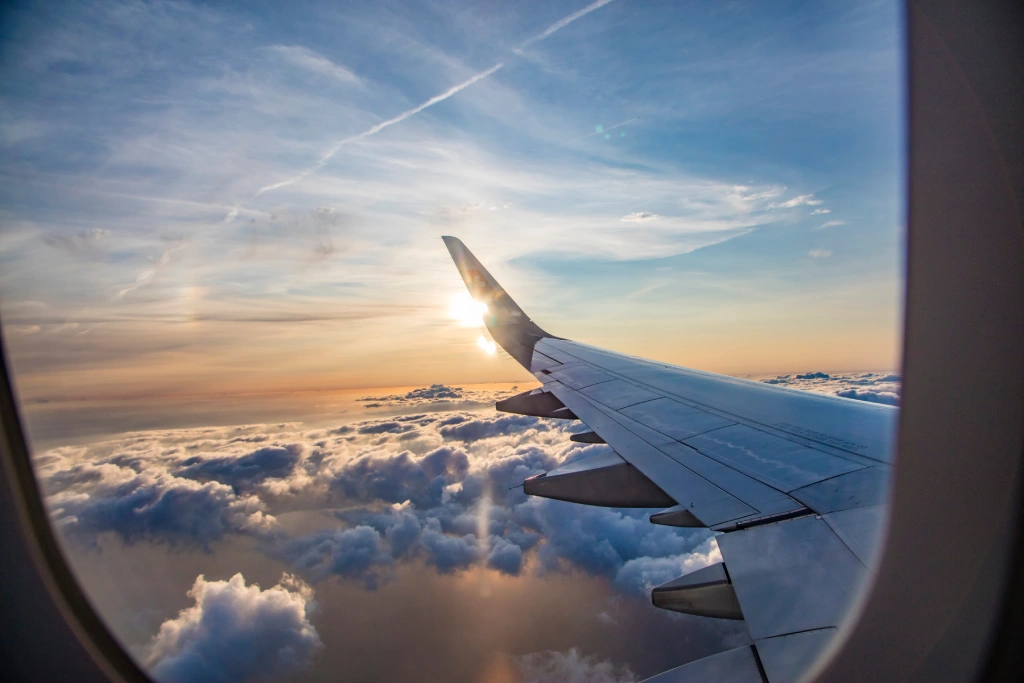Airplane Accident Lawyers Edmonton
Get legal answers now. Speak to our lawyers.
Speak with our Edmonton airplane accident lawyers and get legal answers to your airplane accident questions.
Table of Contents
People often say, “You are more likely to be involved in a car accident on the way to the airport than to be in an airplane accident.” While that is probably true, when airplane crashes happen, the results can be catastrophic.
In 2022, a total of 165 air transportation accidents were reported to the Transport and Safety Board of Canada. This statistic does not capture all Canadian airplane injuries for 2 reasons. First, it does not include accidents outside of Canada. Second, most airplane injuries happen without there actually being a plane crash. For example, being injured by baggage from an overhead compartment or a hot beverage being mishandled by a flight attendant.
Knowing whether you have a claim is not straightforward. If you have been injured while travelling by air, call our Edmonton airplane accident/injury lawyers for a free consultation.
I was injured on an international flight. Can I bring a lawsuit in Edmonton?
If you were injured on an international flight, your claim is likely governed by the Montreal Convention. This is an international treaty between most countries, including Canada. It is meant to provide a universal rule book for air carrier liability around the world. The International Civil Aviation Organization (ICAO) keeps a running list of countries that have adopted the Convention.
In Canada, the Montreal Convention and its predecessor, the Warsaw Convention, have been adopted under the federal Carriage by Air Act.
If you are injured while travelling by air between two countries on the list, your claim will exclusively fall under the jurisdiction of the Montreal Convention. This includes layovers in other countries. Let’s look at an example. If you are injured while travelling from Canada to the Philippines with a layover in Japan, and you are injured on the second leg of the journey (between Japan and the Philippines), you can likely bring a claim in Canada.
Let us put our experience to work for you
Tell Us What Happened
We are here to help Albertans get the compensation and benefits they deserve after being injured in an accident. We take this responsibility very seriously. Book your free call with our personal injury lawyers today and let us help you.
Our phone lines are open 24/7.

How to prove liability in an airplane accident lawsuit in Edmonton
For injuries on most international flights, Article 17 of the Montreal Convention exclusively governs the situations in which the airline may be liable for death or injury. There are 3 criteria:
- Accident: There must be an accident that is an “unusual or unexpected event” that is external. Something like turbulence, which is not unusual, would not be an accident, even if you sustain injuries. Medical events, such as a heart attack or stroke on a flight, would also not be covered since they would not be “external” to the person.
- Injury or death: There must be an injury caused by the accident. Psychological injury alone does not trigger liability under the Convention.
- On board or getting on or off the airplane: The accident and injury must occur while you are on board the airplane or in the course of embarking or disembarking the aircraft. Getting hurt at the airport terminal would not trigger the Convention, but an injury while getting on or off the plane likely would.
Below are three examples of international airplane accidents that lawyers from Preszler Injury Lawyers have brought:
- Overhead baggage being dropped by another passenger, causing a brain injury.
- A disabled person being injured while being moved by a flight attendant from a wheelchair to a seat on the aircraft.
- A flight attendant mishandling a passenger during a medical emergency.
The Convention does not apply to domestic travel within Canada. Passengers can still sue for damages caused by an injury, but this will be under general negligence under the laws of the province where the accident happened.
This area of law is highly complex. If you or a loved one were injured in an airplane accident, it is highly recommended to speak with an experienced lawyer. At Preszler Injury Lawyers, we have represented families throughout Canada in cases against some of the largest airlines in the world. Call today for a free consultation.
Common injuries in airplanes
Common injuries while travelling by airplane can range from minor tissue injury to loss of life. The most common injuries when the plane does not crash include:
- Head injuries: luggage or other objects falling from overhead compartments.
- Burns: mishandled hot food or beverages.
- Injured arms or legs: falling luggage or being struck by a beverage cart.
- And more: the possible scenarios are endless. Getting on and off the plane or a seat malfunction are also common causes of injury.
On an international flight, any physical injury is enough to potentially bring a claim. For domestic flights, it could be any physical or psychological injury. Being injured can be stressful enough. Navigating the complexity of international aviation law and domestic negligence law can add to that stress. Call now to speak with one of our Edmonton airplane injury lawyers for a free consultation.
Types of compensation available for residents of Edmonton injured on airplanes
There are two general areas of compensation. The first is pecuniary damages. This covers financial losses that you have or will lose in the future. The following are examples of pecuniary damages:
- Income loss. Lost income, opportunities, benefits, and pension due to an accident.
- Future loss of earning capacity: Loss of future opportunities, future loss of income, and loss of your competitive edge because of an injury.
- Medical costs. Costs associated with medical or treatment appointments, including mileage.
- Future care. Medical treatments that you may need in the future due to your injuries.
- Housekeeping expenses. If your injuries prevent you from doing your household chores as you did before the accident.
The second area of compensation is non-pecuniary. This means not involving money. The term “pain and suffering” is used synonymously with non-pecuniary damages. This is meant to compensate for pain, emotional distress, and how an injury has and will continue to impair your function. The impact an injury might have on your mood, relationships with family and friends, and the impact on your social and recreational activities all fall under the umbrella of pain and suffering.
For international airplane injuries covered by the Montreal Convention, an airline is strictly liable if you are injured in an “accident” while on the plane or getting on or off the plane. Compensation is measured in Special Drawing Rights (SDRs). SDRs are a standard financial unit of measure and are a weighted average of various international currencies. Under the Convention, an airline is strictly liable to pay compensation up to 100,000 SDRs or just under $200,000 CAD. With a weak Canadian dollar, the amount goes down, and the opposite when the dollar is strong. You are not automatically entitled to the full amount and must prove the value of your pecuniary and non-pecuniary damages.
If an airline can prove an injury was not caused by its negligence, it is possible for compensation to be capped at 100,000 SDRs. If the airline cannot prove this, there is likely no cap to compensation. For example, if an airplane crashes during an international flight due to pilot error, compensation is unlikely to be capped. But if an injury is caused by a third party, such as another passenger, it is possible that your claim against the airline could be capped at 100,000 SDRs.
Filing a lawsuit for airplane accident injuries and timelines
In Alberta, there is a general 2-year limitation period. This general limitation period applies to domestic airplane accident cases. There are some exceptions to this general rule, including when a minor is injured. A minor has 2 years from the age of majority to start a lawsuit. There are other exceptions, such as “discovering” that you have a claim later.
For international accidents governed by the Montreal Convention, there is a strict 2-year limitation period. Courts around the world have concluded that it is a hard deadline for all cases. Whether the COVID-19 pandemic extended this deadline is yet to be confirmed by a court. To err on the side of caution, it is very strongly recommended to consult a lawyer as soon as possible after an international or domestic airplane injury.
How can our Edmonton airplane accident lawyers help?
Aviation injury law is highly complex for four reasons.
First, navigating international law is difficult. Courts in different countries (and often in different languages) have interpreted the Montreal Convention. These cases provide practical guidance on things such as which jurisdiction you can bring a claim in and what constitutes an accident.
Second, investigating an airplane accident on the other side of the world can be complicated and expensive. We work closely with industry professionals and forensic engineers where necessary.
Third, serious aviation cases can be highly publicized and aggressively defended by the opposing side.
Fourth, if there are multiple victims from the same crash, it is possible to bring a class action.
The important takeaway: if you or a loved one were injured in an airplane accident, it is strongly recommended to speak with our Edmonton airplane accident/injury lawyers. Preszler Injury Lawyers have served Canadian families for over 60 years in their pursuit of justice after serious accidents, including those involving airplanes. Call us today for a free consultation. And remember, you don’t pay unless we get you and your family compensation.
Do you live in Edmonton? Here’s how we can help:
Notable Achievements
Awards and Recognitions
Proud to be one of Canada’s oldest personal injury law firms. The firm was founded in 1959 and has now grown to numerous offices across Canada. We have cumulatively secured over $1 billion for thousands of Canadians and are proud to maintain a high standard for our professional services without compromising on care or compassion.
Read More On airplane accident Claims
Here are some blogs on airplane accident claims.

airplane accident
|
September 3, 2025
10 Common Airplane Accident Injuries
Flying is one of the safest ways to travel, but when things go wrong, the consequences can be serious. Whether it’s a major aviation accident…
Commonly Asked airplane accident Questions
Here are our most asked questions on airplane accident claims.
Can I sue if my loved one was injured or killed in an airplane accident?
Yes. If your loved one was injured or killed in an airplane accident, it is possible for you to have a claim against the airline or other third party. Your rights depend on how the accident occurred and the origin and destination of the flight.
How can a personal injury lawyer help me after an airplane accident?
Your legal options after an injury on an airplane are different than when you are injured in a car accident or after a slip and fall. Due to the nature of air travel, the injury may have occurred in a different country or province. The small details of where and how the accident occurred can determine whether you have a viable case or not. A personal injury lawyer can investigate and determine what laws apply and whether you have a viable case in Alberta.
What are some common injuries that occur on an airplane?
Common injuries on an airplane include burns from hot beverages, head injuries from overhead baggage being dropped, physical injuries from the service cart, physical injuries sustained in a hard or crash landing, and more.
What should I do if I become injured on an airplane?
If you are injured on an airplane, the first thing to do is report it to a member of the flight crew. This is especially important when the injury occurs where other passengers or crew members are not impacted. For example, a passenger can be severely injured by baggage falling from an overhead compartment when no air carrier staff are around. It is also important to seek medical attention and, when possible, reach out to an experienced aviation lawyer about your legal options.
Who is responsible for injuries that occur from an airplane accident?
On most international flights, if an injury occurs because of an accident, the airline carrier is responsible to a certain extent. The law considers accidents to be things that one cannot reasonably expect during a flight. For example, turbulence would not be an accident. For domestic flights within Canada, the person or entity who caused the injury may be liable. In this case, it is necessary to prove that the person who caused the injury was negligent. For most international flights, negligence does not need to be proven in every case.
What should I do if I am in an airplane accident outside of Alberta?
If you have been involved in an airplane accident outside of Alberta, the first and most important thing to do is seek appropriate medical attention. The second thing is to report the injury to the carrier. Third, you should speak with an aviation injury lawyer to determine whether you have a case and to discuss the next steps.
How do you establish liability in an airplane accident or injury?
Liability in an airplane accident depends on three main factors. How did the accident happen? Where did the accident happen? Where did the flight originate? What was the final destination? The answers to these questions will determine what law applies and the viability of a case in Alberta.
What type of compensation is available for an airplane accident in Alberta?
Compensation after an airplane accident can include pain and suffering, past and future income loss, loss of housekeeping capacity, out-of-pocket expenses, future care costs, and more.
What is the process of filing an airplane accident or injury claim?
If you were injured in an airplane accident, there is a 2-year limitation period. This means you must file a lawsuit within two years of the accident to preserve your legal rights. While there may be some exceptions to this rule, it is recommended that you consult an aviation lawyer as soon as possible to avoid prejudicing your claim.
HURT WHILE TRAVELING BY AIR IN EDMONTON?
Speak With Our Lawyers for FREE Now
We handle complex aviation accident claims
Find out your legal options after an in-flight injury, runway incident, or other aviation accident.



